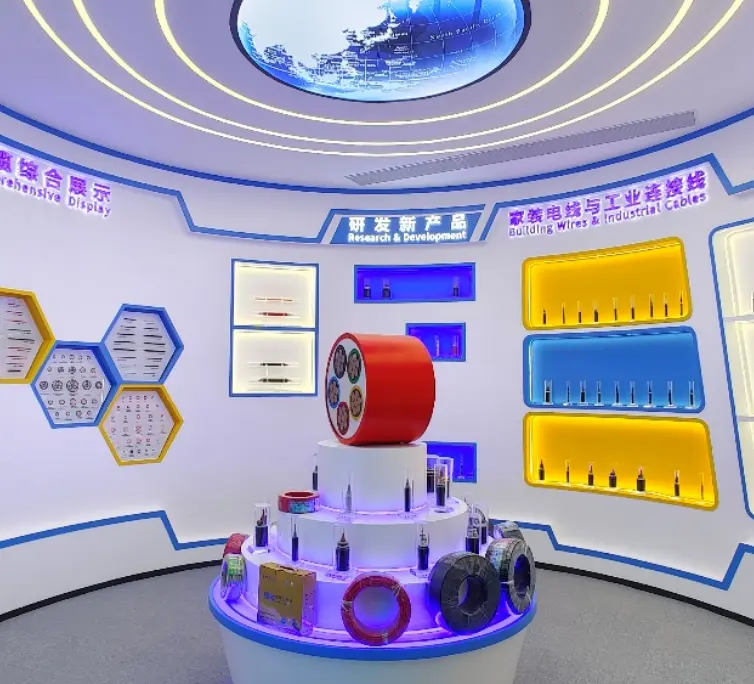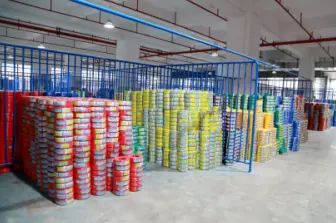Principle and Application Analysis of Fire-Rated Electrical Cables
In the fields of power transmission and building safety, fire-rated electrical cables have become indispensable key materials in modern buildings, rail transit, industrial facilities, and other scenarios due to their ability to maintain the integrity of the power system during a fire. Their core design objective is to maintain power transmission functions for a certain period in high-temperature or open flame environments, thus providing time for personnel evacuation and firefighting rescue. This article will analyze the working principles of fire-rated electrical cables from three aspects: material selection, structural design, and performance testing.
The Core Principles of Fire-Rated Electrical Cables
The fire-resistant performance of cables is mainly achieved through the synergistic effect of the following three levels:
Selection of Flame-Retardant Materials
The insulation layer and sheath of fire-rated electrical cables usually use flame-retardant polymers (such as low smoke zero halogen materials, LSZH). These materials do not release toxic gases when encountering fire and can inhibit the spread of flames. Their flame retardant principle is by adding metal hydroxides (such as aluminum hydroxide, magnesium hydroxide), which decompose and absorb heat at high temperatures, releasing water vapor that dilutes oxygen concentration, thereby delaying combustion.
Protection of Fire-Resistant Insulation Layer
The outer layer of the cable conductor is wrapped with high-temperature resistant materials such as mica tape or ceramicized silicone rubber. Mica tape forms a stable ceramic-like insulating layer at high temperatures (usually above 800°C). Even if the external sheath is burned, it can maintain the insulation between conductors, ensuring normal current transmission for at least 1 to 3 hours.
Multi-Layer Structural Design
Fire-rated electrical cables often use a "concentric layer + armor" structure:
Conductor layer: Made of copper or aluminum to ensure conductivity;
Mica insulation layer: Wrapped around the conductor, providing high-temperature insulation;
Flame-retardant sheath: Blocks external flames;
Metal armor layer (optional): Enhances mechanical strength to prevent the cable from collapsing and breaking.
Performance Testing Standards of Fire-Rated Electrical Cables
To ensure the reliability of fire-rated electrical cables, international and domestic standards impose stringent testing requirements on their performance:
Fire Resistance Test (such as IEC 60331): The cable is placed in a flame (750-950°C), continuously energized, and monitored to see if it can maintain functionality for 90 minutes;
Flame Retardancy Test (such as GB/T 18380): Evaluates the extent of cable burning, requiring the flame to self-extinguish within 30 seconds after the fire source is removed;
Smoke Density and Toxicity Test (such as IEC 61034): Ensures smoke transmittance during combustion ≥ 60%, and the gas toxicity index is below safety thresholds.
Application Scenarios and Future Trends of Fire-Rated Electrical Cables
Fire-rated electrical cables are widely used in high-rise buildings, subway tunnels, nuclear power plants, and other scenarios with high safety needs. For instance, in fire alarm systems and emergency lighting circuits, fire-rated electrical cables ensure the continuous operation of critical equipment in a fire scene.
Future development directions include:
Environmental Protection: Developing degradable flame-retardant materials to reduce environmental pollution;
Intelligence: Integrating temperature sensors to monitor cable status in real-time;
Extreme Environment Resistance: Improving performance in complex conditions such as humidity and chemical corrosion.
Through material innovation and structural optimization, fire-rated electrical cables achieve the "lifeline" function in fire environments. With technological advancements, their performance will be further enhanced, providing a more solid guarantee for public safety. Fire-rated electrical cables, due to their ability to maintain the integrity of the power system during a fire, have become indispensable key materials in modern buildings, rail transit, industrial facilities, and other scenarios. Choosing products that meet international standards and regular maintenance is key to maximizing their fire resistance efficiency
Latest News & Blog
 English
English  français
français  Deutsch
Deutsch  العربية
العربية  tiếng việt
tiếng việt  ไทย
ไทย  čeština
čeština  Indonesia
Indonesia  Eesti
Eesti  български
български  slovenčina
slovenčina 



